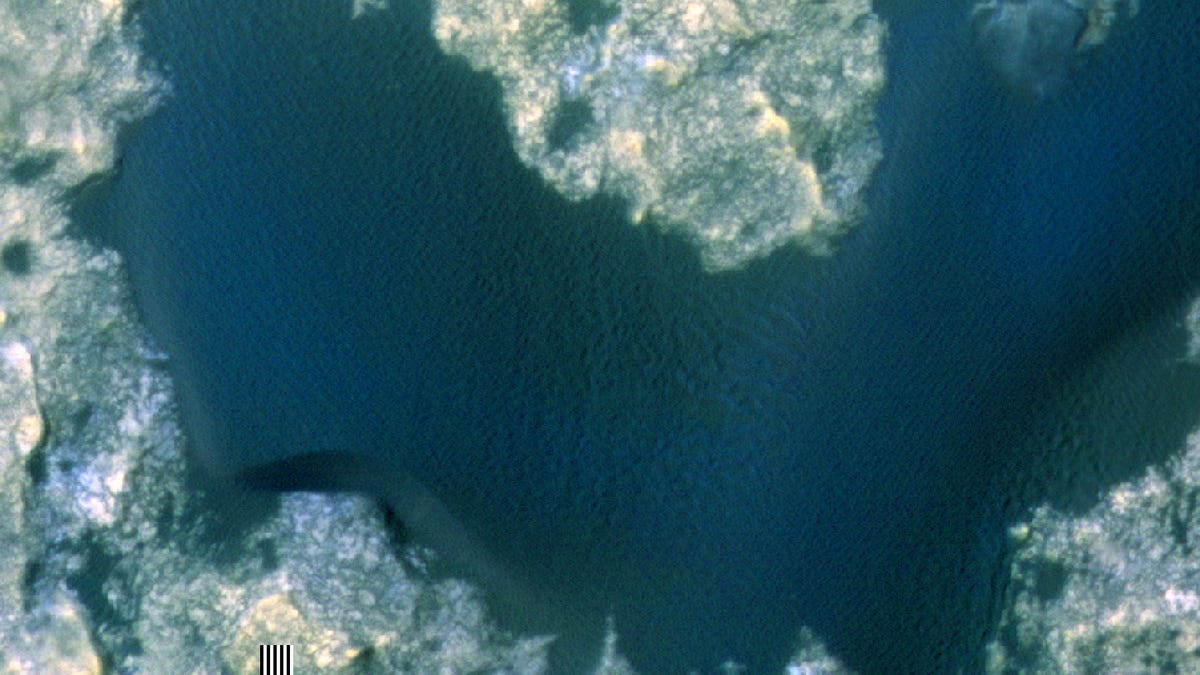Curiosity rover will be first to visit Mars sand dunes
The Mars Curiosity rover is gearing up to boogie on the beach as NASA sends it on a new mission to study the Red Planet's fascinating sand dunes.
While Mars doesn't have any oceans, it does have some lovely beachfront property. NASA's Curiosity rover is on its way to check out a prime vacation time-share possibility known as the Bagnold Dunes. The dunes are a dark-colored area of shifting sands and will mark a new first in planetary exploration.
"No active dunes have been visited anywhere in the solar system besides Earth," NASA notes in a press release.
The rover previously visited some small sand ripples and drifts, but not full-fledged dunes. NASA describes one of the dunes as being as tall as a two-story building and as wide as a football field. Curiosity is still hanging out in the area of Mount Sharp, a 3.4-mile-high (5.5-kilometer) peak in the Gale crater. The dunes are located along the mountain's edge.
As of Monday's announcement, Curiosity was about 200 yards (183 meters) away from the dunes. It will scoop and study samples and drive over the sand to take a peek below the top layer.
"We've planned investigations that will not only tell us about modern dune activity on Mars but will also help us interpret the composition of sandstone layers made from dunes that turned into rock long ago," NASA's Bethany Ehlmann said.
Here's a fun bit of history trivia. The Bagnold Dunes are named for Brigadier Ralph Bagnold, who wrote a book called "The Physics of Blown Sand and Desert Dunes" that was originally published in 1941. It's fitting for a fascinating section of Mars to bear his name, though it's considered an informal designation.
Scientists are hoping to learn more about how the dunes form and why they have ripples that are so much bigger than those seen with dunes on Earth. Wind activity, along with the size and weight of the various mineral grains that make up the Martian dunes, could come into play. We will know a lot more once Curiosity has had a close look.


